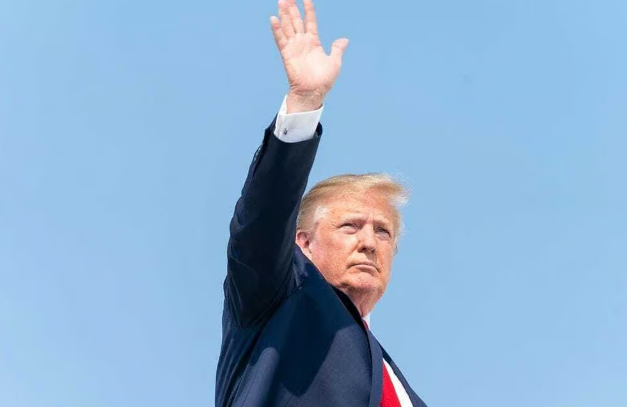President Donald Trump’s recent imposition of tariffs on imports from Canada, Mexico, and China is poised to negatively affect the United States economy. Such protectionist measures have historically led to increased consumer prices, strained international relations, and economic downturns. The current tariffs, which include a 25% levy on Canadian and Mexican imports and a 10% tax on Chinese goods (Greenhouse, 2025), are likely to follow this pattern, resulting in foreseen consequences for American consumers and businesses.
One of the most immediate impacts of tariffs is increased consumer prices. Tariffs function as a tax on imported goods, and businesses that purchase internationally often pass these additional costs on to consumers. When consumerism meets protectionism, the economy of even a stable nation can deteriorate. For instance, the recent tariffs on Canada are expected to raise prices on a variety of products, including groceries and vehicles (Greenhouse, 2025). The surge in costs that will ensue disproportionately affects middle and lower-income households, reducing their purchasing power and overall standard of living, contrary to a long-term goal of the Trump administration (Hager, 2024). Additionally, higher prices can lead to decreased consumer spending, a critical driver of the U.S. economy, potentially slowing economic growth.
Historically, the United States has experienced the adverse effects of high tariffs. The Smoot-Hawley Tariff Act of 1930, which raised U.S. tariffs on over 20,000 imported goods, is widely believed to have exacerbated the Great Depression by stifling international trade and prompting retaliatory tariffs from other countries (Duignan, 2019), much like the contemporary “tariff war” between the United States and Canada (Gillies, 2025). This protectionist policy led to a significant decline in global trade, contributing to economic hardship both domestically and internationally. A study by the Federal Reserve Bank of New York found that effective tariff rates during the 1930s were higher than their nominal rates due to deflation (Crucini, 2003), further amplifying their negative impacts. This historical precedent underscores the potential risks associated with the current tariff strategy.
The current tariffs have already elicited promises of retaliation from affected nations. Canada has announced plans to impose a 25% on $155 billion worth of American goods (Mukherjee, 2025), targeting products such as liquor, vegetables, fruits, clothing, shoes, and perfume (Welage et al., 2025). Mexico and China are also expected to implement countermeasures, with China considering filing a complaint with the World Trade Organization (Fortinsky, 2025). These retaliatory actions can harm U.S. exporters, leading to decreased sales and potential job losses in affected industries. For example, American farmers, who rely heavily on exports, may find their products less competitive in foreign markets due to increased tariffs, resulting in surplus goods and financial losses. In 2022, the American agricultural sector had its best export year in terms of revenue, garnering $196 billion, a number that will decrease exponentially because of the effect the Trump tariffs have on other nations. Alongside this, the agricultural imports in 2023 amounted to $195.4 billion (Shahbandeh, 2024), a number that will substantially increase with the newly imposed tariffs. In essence, U.S. farmers will experience detrimental economic downturns that will lessen their revenue and increase their spending.
Moreover, the broader economic implications of these tariffs are concerning. Analyses suggest that the tariffs could lead to increased costs for raw materials, which may result in higher prices across various sectors, ultimately affecting consumers (Bytebridge, 2025). Critics argue that these measures could reduce long-term economic output and weaken international trade mechanisms. The Tax Foundation estimates that the proposed tariffs could reduce the long-run size of the U.S. economy by 0.5% (York, 2025), a number that may seem small but is quite substantial. Additionally, trade policy uncertainty may deter investment, as businesses may delay or cancel plans due to concerns over potential cost increases and market instability.
While the protectionist intention behind imposing tariffs may be to protect domestic industries and address specific policy concerns, historical evidence, and current analyses indicate that such measures often lead to adverse economic outcomes. The recent tariffs on Canadian, Mexican, and Chinese goods are likely to increase consumer prices, provoke retaliatory actions, and hinder economic advancement. Ultimately, the imposed tariffs will be harmful to the very nation they aim to protect. Policymakers should consider these potential consequences and explore alternative strategies that promote fair trade without imposing undue burdens on American consumers and businesses.
References
ByteBridge (2025). Impact of U.S. imposing high tariffs on Canada, Mexico, and China.
Crucini, M. J., & Kahn, J. (2003). Tariffs and the Great Depression Revisited. Federal Reserve
Bank of New York Staff Reports, https://www.newyorkfed.org/medialibrary/media/research/staff_reports/sr172.pdf.
Duignan, B. (2019). Smoot-Hawley Tariff Act | History, Effects, & Facts. Encyclopædia
Britannica. https://www.britannica.com/topic/Smoot-Hawley-Tariff-Act
Fortinsky, S. (2025). China to file lawsuit with WTO, vows ‘countermeasures’ in response to
Trump tariffs. The Hill, https://thehill.com/policy/international/5121368-china-files-legal-case-us-wto-tariffs/
Gillies R. & Sanchez, F. (2025). Tariffs: Trump’s trade war sparks retaliation from
Canada, Mexico. AP News. https://apnews.com/article/trump-tariffs-canada-mexico-retaliation-trudeau-sheinbaum-70e067b092a3af72c2eb7ca37d532c91
Greenhouse, S. (2025). Why Trump tariffs will be ‘very bad for America and for the world.’ The
Guardian, https://www.theguardian.com/business/2025/jan/31/trump-tariffs-us-economy
Hager, E. (2024). Trump Says He’ll Fight for Working-Class Americans. His First Presidency
Suggests He Won’t. ProPublica,
https://www.propublica.org/article/donald-trump-agenda-working-class
Mukherjee, P. (2025). Canada announces retaliatory tariffs on long-time ally.
Reuters. https://www.reuters.com/world/americas/canadas-trudeau-announces-counter-tariffs-2025-02-02/
Shahbandeh, M. (2024). Total value of U.S. agricultural imports from 2015-2024. Statista,
Welage, N. U., et al. (2025). Canada-U.S. tariff war: How it will impact different products and
industries. The Conversation. https://theconversation.com/canada-u-s-tariff-war-how-it-will-impact-different-products-and-industries-248824
York, E. (2025). Trump tariffs: Tracking the economic impact of the Trump trade war. Tax
Foundation, https://taxfoundation.org/research/all/federal/trump-tariffs-trade-war/










































Tyler Draper • Feb 4, 2025 at 7:24 am
Hey David, I generally think that tariffs lead to trade wars that jeopardize farmers and end up costing consumers. During Trumps first term in office the trade war caused many Arkansas soybean farmers to get retaliatory tariffs from China. Now, a lot of our farmers export to Brazil rather than China.
I like that you addressed the Trump Administrations “protectionist intentions,” to help American jobs and industry. Do you think offering consumer tax credits for buying American made products would protect industries? For example, $5,000 tax credits for vehicles made in the US with our own steel? Looking forward to your response. Keep up the great work.
David Orme • Feb 5, 2025 at 5:46 pm
Hello! I’m glad we agree on this subject; the potential negatives regarding tariffs outweigh the potential positives. Farmers are a cornerstone of the U.S. economy, so they need to be a priority.
Yes, I think that offering consumer tax credits would promote American-made products and protect our industries while simultaneously negating the negative consequences of tariffs. Offering incentives like a $5,000 tax credit for American-made vehicles would boost demand for domestic goods without raising prices on imports or straining international relations with countries like Canada, Mexico, and China through tariffs. Thus, something of that nature would benefit our nation more than the projected outlook of the contemporary tariffs!
Thank you! I’m glad I have the opportunity to share my views on important matters like this.